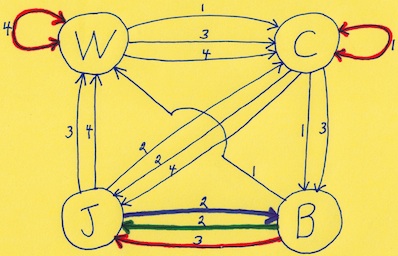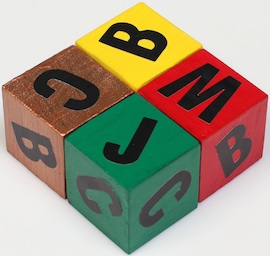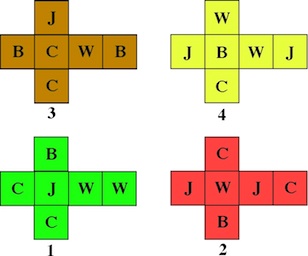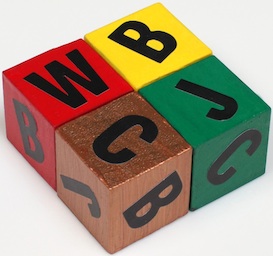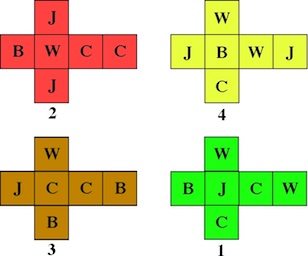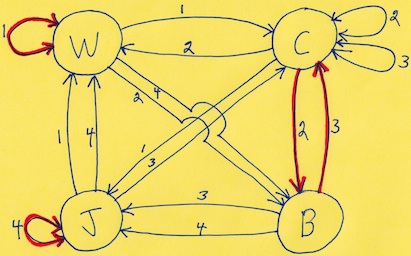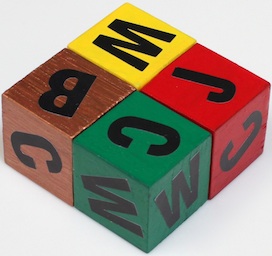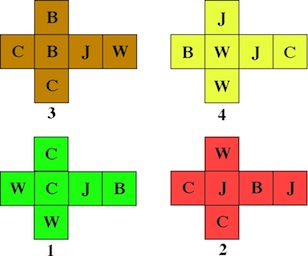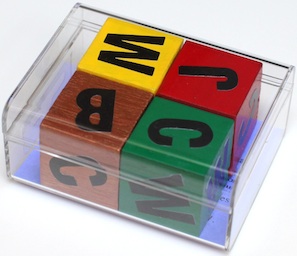
Based on a puzzle produced in 1899; this version made by J. A. Storer, 2011.
(plastic box 1.5" x 2.5" x 3.3", instruction card,
and four 1+3/16" painted wood blocks with vinyl stickers)
Arrange the cubes in a 2x2 array so that all four letters appear on the top and bottom faces, all four letters appear on the left and right sides, and all four letters appear on the front and back sides. The letters are based on the names of two Boer generals, Joubert and Cronje, and two British generals, Buller and Warren, from an 1899 production of this puzzle.
We begin with a different puzzle; here the graph constructed as for Instant Insanity; we use letters to label faces and number the cubes 1 = green, 2 = red, 3 = brown, and 4 = yellow:
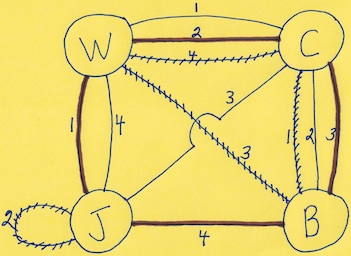
The two cycles, labeled by the thick edges and the hashed edges, give the following instant insanity like solution to arranging the cubes in a 1x4 array so that all for sides show the 4 letters; note that unlike the solution for instant insanity, one of the Hamilton cycles is actually a set of two cycles, a self loop and a cycle of three vertices:
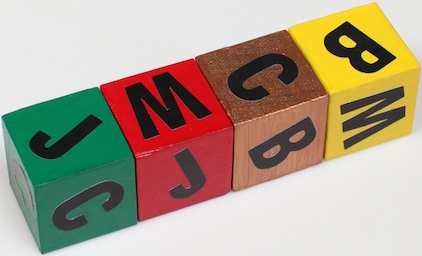
|

cycle set 1: (J - 1 - W - 2 - C - 3 - B - 4 - J) cycle set 2: (J - 2 - J) (C - 1 - B - 3 - W - 4 - C) |
